The Vatican is a unique "state within a state", a popular tourist center and a religious shrine for millions of Catholics from all over the world. It has its own government, bank and military, and all citizens of this enclave state have a passport.
You can get to the Vatican from almost anywhere in Rome by public transport. Walkers will enjoy the walking route from the center of Rome or Piazza Venezia to the enclave.
Tourists from all over the world come to the Vatican to see with their own eyes the unique frescoes of the Sistine Chapel, visit St. Peter's Basilica or visit the Vatican Gardens. Other sights of the Vatican include Raphael's Stations, the Vatican Library, the Egyptian and Etruscan Museums, and the Pinakothek.
Pilgrims most often visit their shrine during the election of a new Pope, as well as at Christmas and Easter. For its visitors, the Vatican offers a lot of souvenirs - stamps, money with local symbols, travel albums, postcards and magnets.
What to see in the Vatican?
The most interesting and beautiful places, photos and a brief description.
- St. Peter's Square
- Apostolic Palace
- Saint Paul's Cathedral
- Grotta di Lourdes
- The Sistine Chapel
- Pinakothek
- Vatican Gardens
- Stanza Raphael
- Villa Pia
- Pio Clementino Museum
- Church of Santo Stefano degli Abyssini
- Apartments Borgia
- Swiss Guard
- Niccolina Chapel
- Gregorian Etruscan Museum
- Pinia's courtyard
- Vatican Apostolic Library
- Gregorian Egyptian Museum
- Chiaramonti Museum
- Leonine wall
St. Peter's Square
One of the most famous sights of the Vatican. St. Peter's Square, built in the 17th century, is located in front of the cathedral of the same name. The line visually continuing the symmetrical semicircles of the colonnades that form the square is the outer boundary of the Vatican. The square is decorated with two fountains and an Egyptian obelisk brought by Caligula to Rome.
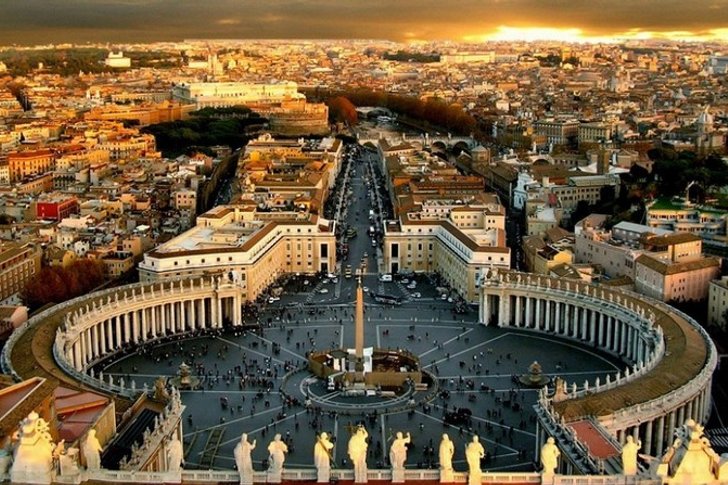
Apostolic Palace
The official residence of the Pope consists of a whole collection of palaces, galleries and halls, united by passages. The Apostolic Palace houses the Papal apartments, several chapels, offices of the Roman Catholic Church, as well as museums and the Vatican Library. Here you can visit the Pinakothek, the Sistine Chapel and Raphael's Stanzas.
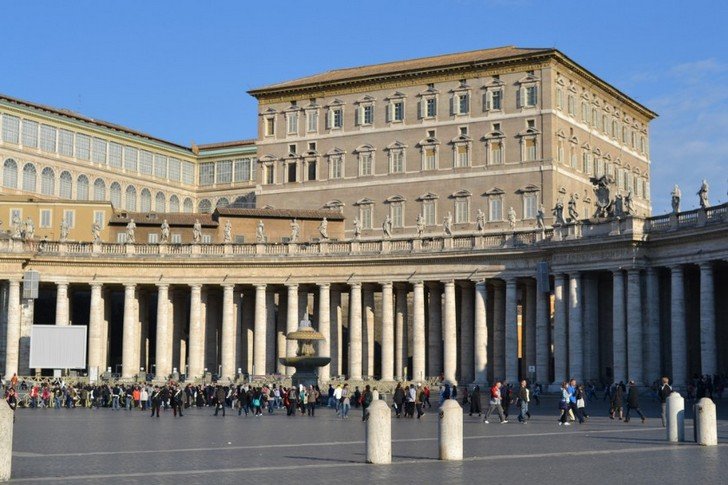
Saint Paul's Cathedral
Peter's Basilica is the true heart of the Vatican. In the 4th century, a small basilica was erected over the alleged tomb of the Apostle Peter, which in the 16th century was decided to be rebuilt into a grandiose cathedral. The consecration of the building took place in 1626. Such great masters as Raphael, Michelangelo and Bernini worked on the creation of St. Peter's Cathedral.

Grotta di Lourdes
The artificial cave Grotta di Lourde, located on the territory of the Vatican Gardens, is a smaller copy of the French Lourdes Grotto. The reason for the construction of the Grotta di Lourda was the dogma of the Pope in 1854. The construction of the cave began in 1902, and its consecration by Pope Pius X took place on March 28, 1905.

The Sistine Chapel
The Sistine Chapel is a unique religious and cultural monument of the Renaissance. Not very remarkable in appearance, the Sistine Chapel has become famous throughout the world thanks to its frescoes. The works of Botticelli, Rosselli and Perugino in 1536-1541 were supplemented by the grandiose "Last Judgment" by Michelangelo. Currently, the Sistine Chapel is used for conclaves.
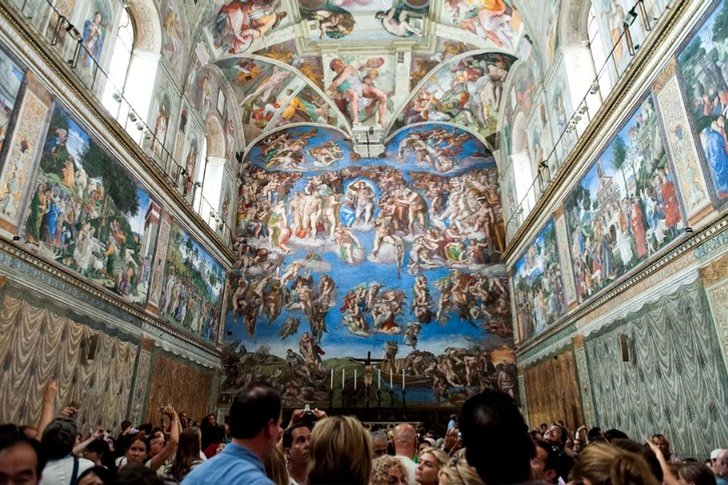
Pinakothek
The Vatican Pinakothek was founded in the 18th century by Pope Pius VI and received its own separate building in 1932. This art gallery, open to everyone, consists of 18 rooms, in which more than 400 paintings are exhibited in chronological order from the 12th to the 19th centuries. Here you can see the works of Caravaggio, Raphael, Giotto, Perugino, Titian and other famous masters.
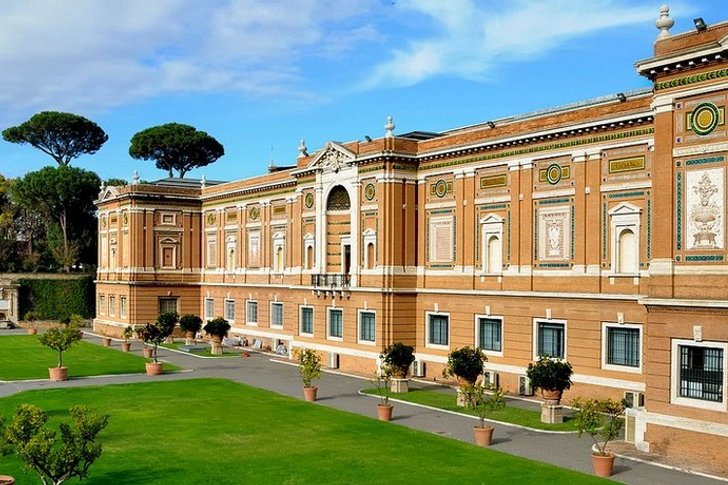
Vatican Gardens
The famous Vatican Gardens are first mentioned in the 13th century, when their main use was to grow vegetables, fruits and medicinal plants. Now the Vatican Gardens, with an area of more than 20 hectares, have a decorative value, and you can only visit them with a guide. Here is a heliport for communication with Roman airports.
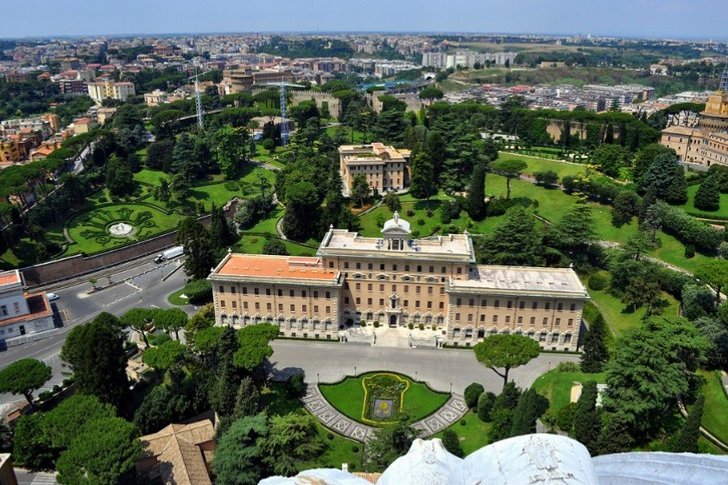
Stanza Raphael
Raphael's Stanzas are four small rooms in the Papal Palace, decorated with frescoes by the great painter. Work in these premises was carried out from 1508 to 1517. Some of the frescoes decorating, in particular, the Hall of Constantine, were made after the death of Raphael by his students.

Villa Pia
The Villa of Pope Pius IV, also known as the Casino Pius, was built in the middle of the 16th century. The building currently houses the headquarters of the Pontifical Academy of Sciences. Villa Pia consists of two pavilions and two covered walkways. All rooms are decorated with frescoes and statues, and the floors are tiled with majolica tiles.
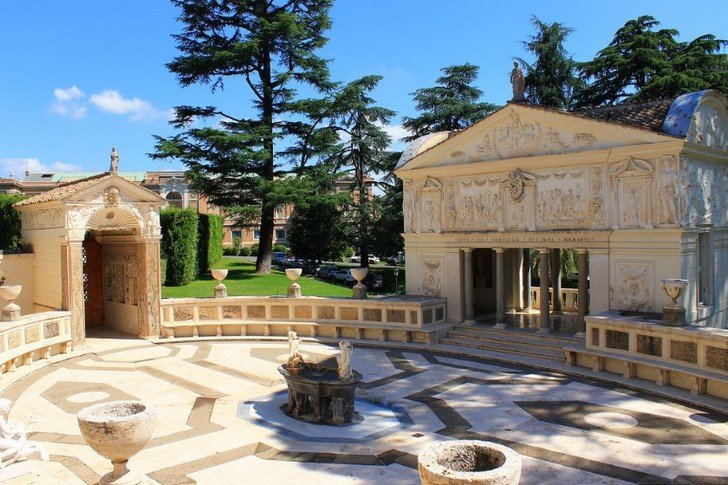
Pio Clementino Museum
The Museum of Ancient Art Pio Clementino was created on behalf of Pope Clement XIV and Pius VI, for which it received its name. This extensive museum was founded in the 18th century in the Belvedere Palace. Here are collected sculptures depicting people and animals, several mosaics and sarcophagi, as well as many Roman busts.
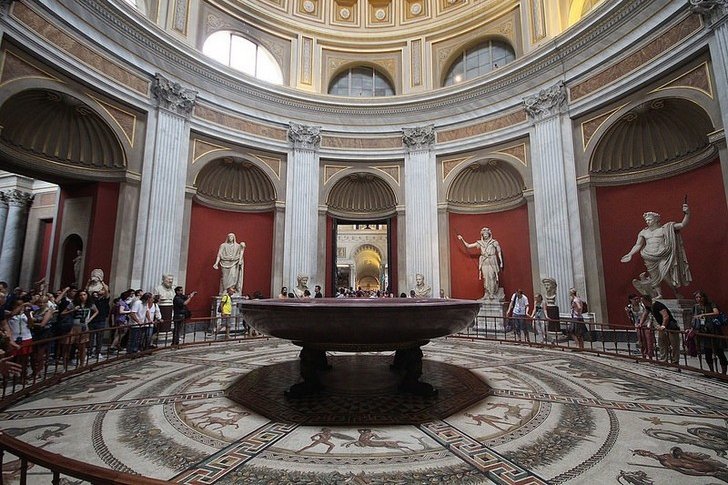
Church of Santo Stefano degli Abyssini
The church of Santo Stefano degli Abissini is considered one of the oldest churches in the Vatican. It was built in the 5th century, but after a while it was destroyed. In 1159, the church was rebuilt again, after which it underwent several reconstructions. Now Santo Stefano degli Abissini is a functioning church, decorated with a unique fresco of the 15th century.

Apartments Borgia
One floor below the Raphael Station is the Borgia apartment. These premises at the end of the 15th century were the private chambers of Pope Alexander VI. The apartments consist of five halls decorated with frescoes. Pope Alexander VI personally chose subjects for drawings. In addition to the halls, the Borgia apartments also include the treasury and the bedroom of the Pope.

Swiss Guard
The Swiss Guard was created in 1506 and today is the only armed forces of the Vatican. The guards take part in masses and diplomatic receptions, guard near the chambers of the Pope and the Secretary of State, and also guard the entrance to the Vatican and all floors of the Apostolic Palace.

Niccolina Chapel
The rather modest room of the Niccolina Chapel (only 6.6 × 4 m) consists of two tiers. This is one of the oldest premises of the Apostolic Palace. The walls of the Niccolina Chapel are decorated with extraordinarily beautiful frescoes dedicated to the life of St. Stephen and St. Lawrence. The painting was done by the famous Italian artist Fra Beato Angelico.

Gregorian Etruscan Museum
Since 1828, traces of ancient settlements have been discovered in Southern Etruria. It was decided to collect all the finds discovered during these excavations in one exposition. This is how the Etruscan Museum was created, which opened in 1837. Various household items, a bronze statue of Mars and a marble portrait of Athena are exhibited here.
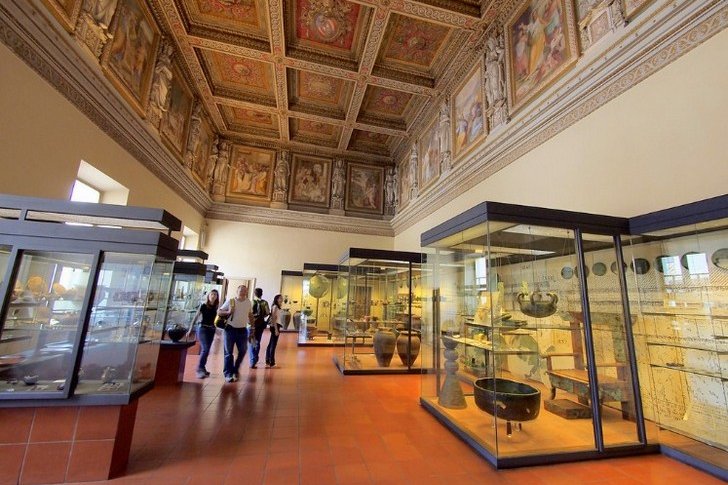
Pinia's courtyard
The Pine Cone Courtyard, also known as the Pine Cone Courtyard, is one of the attractions of the Vatican. This place got its name in honor of the bronze cone located in front of the Bolvedere Palace. In 1990, Pinia's courtyard was additionally decorated with a huge spinning golden ball about 4 meters in diameter.

Vatican Apostolic Library
The unique Vatican Library began to be collected in the 15th century. Currently, it includes a huge number of books (including in Latin and Greek), manuscripts, engravings, maps and coins. The halls of the library are decorated with frescoes on a religious theme.
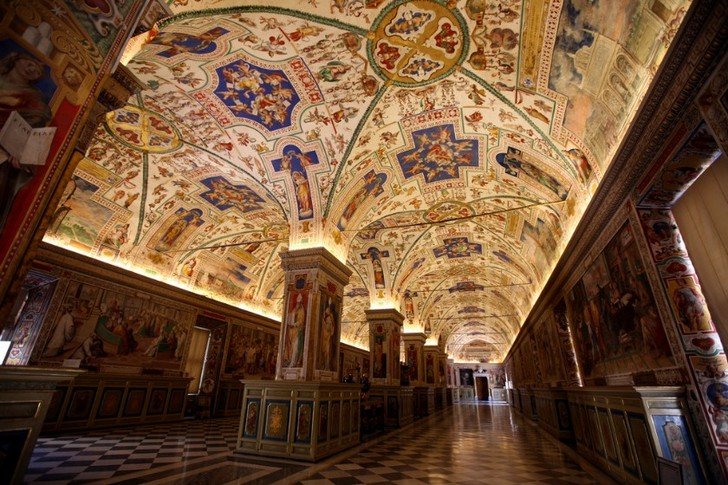
Gregorian Egyptian Museum
Founded in 1839, the Gregorian Egyptian Museum contains various art objects from the Egyptian dynasties. The museum consists of 9 halls, which exhibit ancient Egyptian sarcophagi, mummies, statues and steles, household items of the ancient Egyptians, as well as Christian and Islamic ceramics.
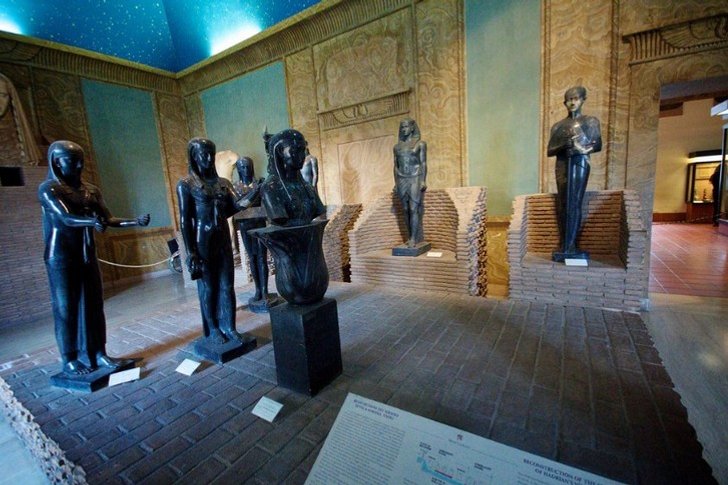
Chiaramonti Museum
Chiaramonti is an antique museum of classical sculpture, created between 1805 and 1807. The museum consists of a large arched gallery called the Corridor and two halls. Chiaramonti houses sculptures from the Roman era, works of art dedicated to Roman and Greek mythology, as well as more than 3,000 fragments of unique inscriptions.
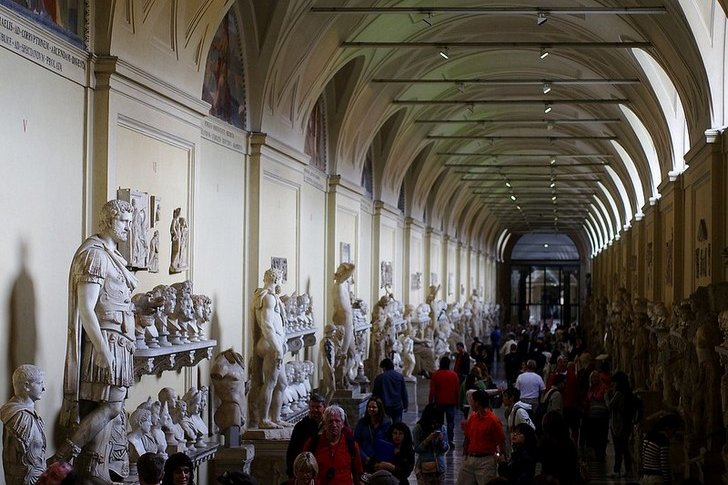
Leonine wall
The medieval fortification, called the Leonine Wall, surrounds, in addition to the Vatican, the Borgo area. After the Saracens attacked Rome in 846, it was decided to start building a defensive wall. The Leonine Wall, designed to protect the Vatican from Muslim attacks, was built from 848 to 852.
